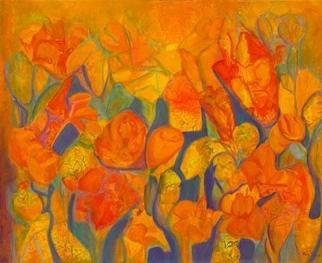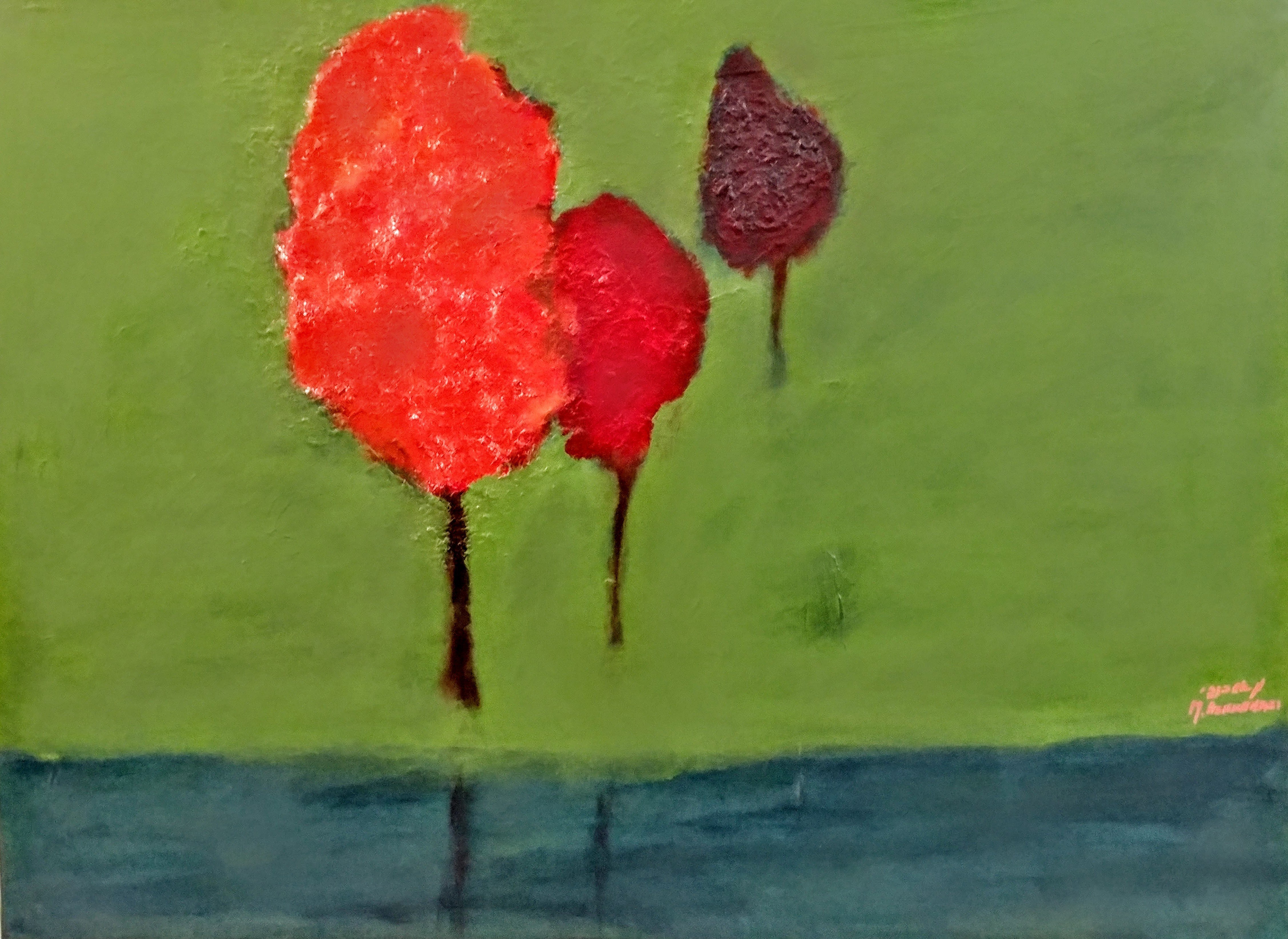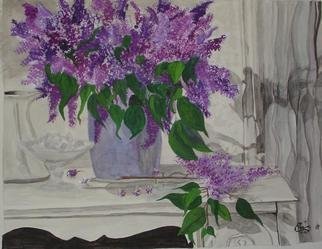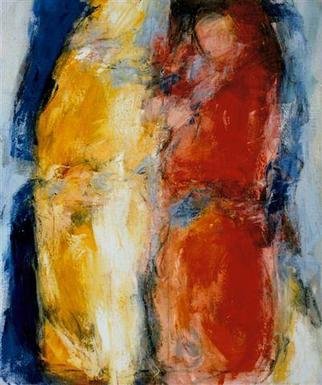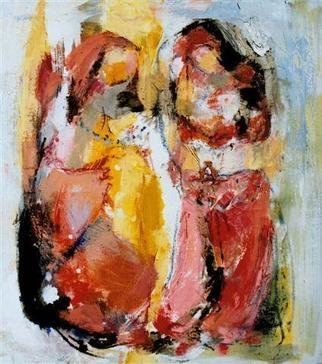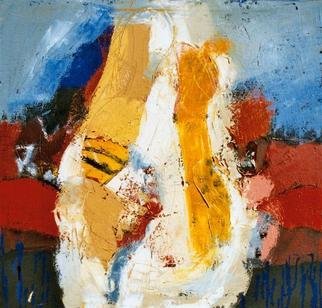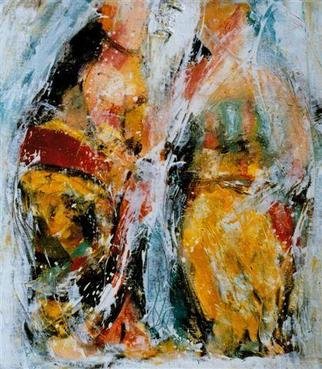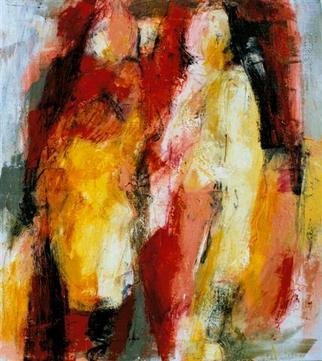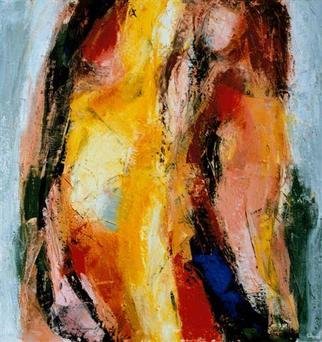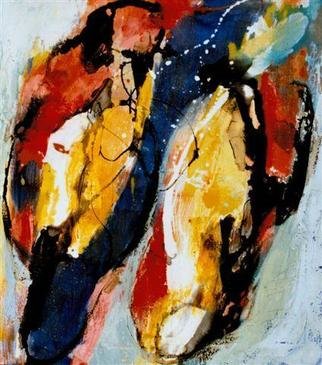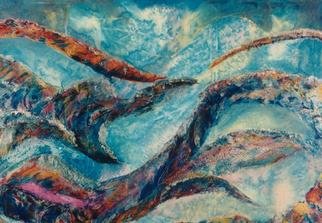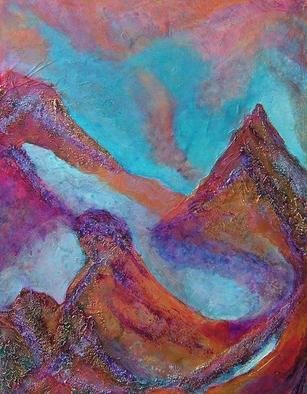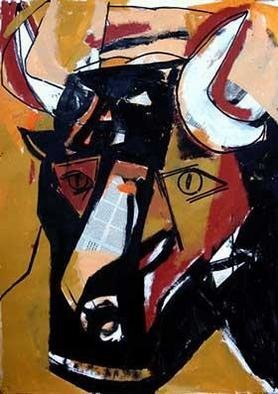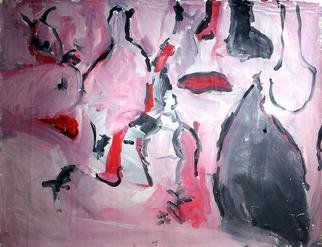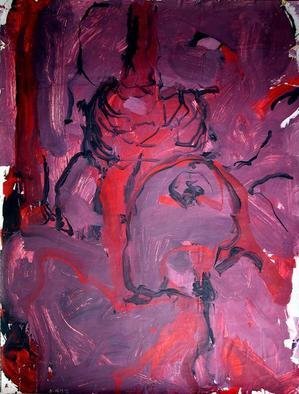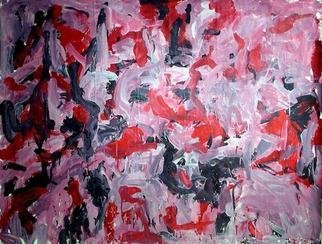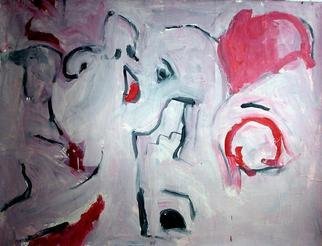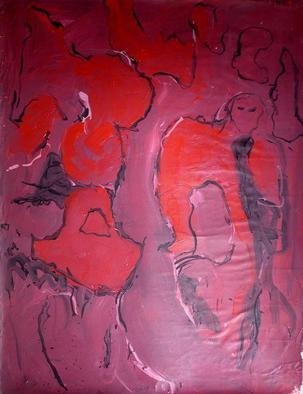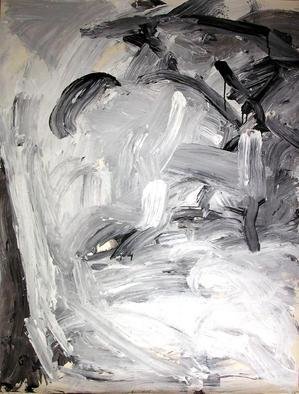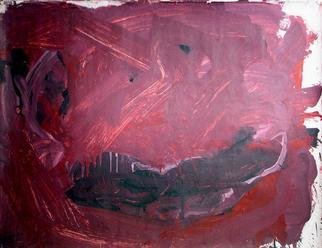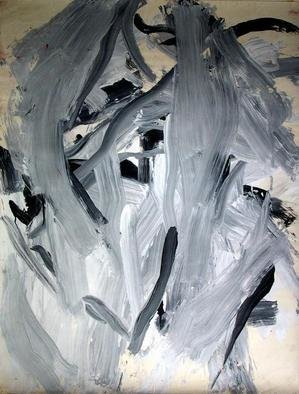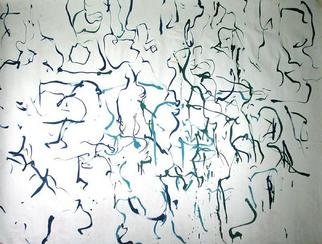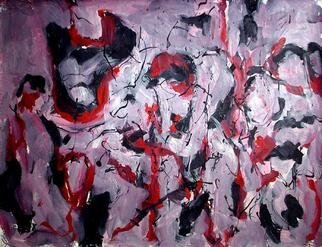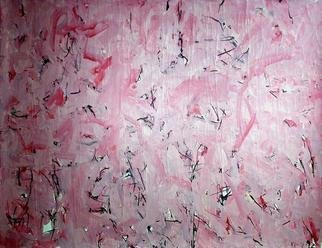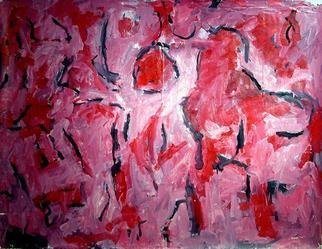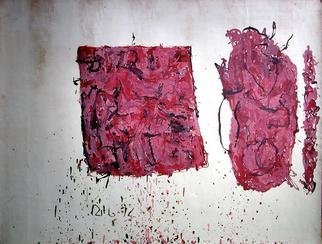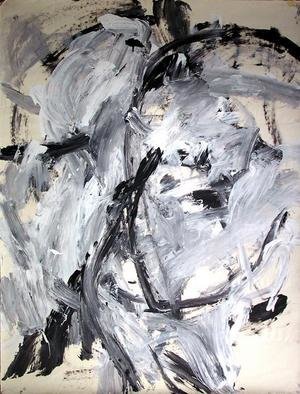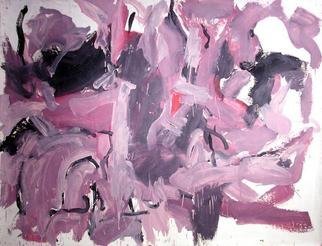Contemporary Art For Sale Price Range: $3000 - $3999
Page 8 of 80

Over 2314 works of original contemporary art for sale in the price range $3000 - $3999. On this page you can find works by Micha Nussinov, Tary Socha, Michal Ashkenasi, Eve Co, Hans-ruedi Kammermann, Philip Hallawell, Jose Luis Lazaro Ferre, Richard Lazzara for the follwing mediums: 1. Links to more artwork and 80 pages for works in the price range $3000 - $3999 and links to further artists' works at the bottom of this page. To view a work by any of these visual artists simply click on the image or browse the artist's portfolio.
MORE »
Tary Socha - I am an innovative contemporary artist, exploring unconventional images and techniques in mixed media, collage, acrylic painting, pastel and textile and surface design. I am committed to experimentation and a unique and dynamic expression of my own view of the natural environment, with unexpected color, texture and energy. Through my work, I intend to uplift and brighten the spirit of the viewer, and cause them to question their own perspective of nature and life. My paintings exhibit a fascination with the physical properties of life and science involved in transforming our environment, such as the power of electrical storms, oceans, volcanoes, oxidation, and the process of renewal and rebirth that arises from deterioration and regeneration. Reverence for life, its phenomena and the interconnectedness of all things are the foundation of my work. Primarily, my images are abstractions and impressions of earth, sky, sea and other mysterious phenomena. However, I also continue to work in pastels, drawing, printmaking, and textile design, and I explore all types of imagery, to expand my creative insight and skills. ...
Michal Ashkenasi - Welcome to my Portfolio! If you are wondering if this is just another floral/landscape artist,I am not! My work is abstract-figurative and ,as you see,I love color!!I work directly on the canvas and the images come out of my imagination or from my memory . I do Collages and Watercolor too , but for me , the most deep feelings come out with Oil or Acrylic.With those media I can fulfill the strong contrastes I work with , and which are part of my style....
Eve Co - I began painting and drawing in 1987 and have not stopped. I have a wide range from, landscapes, still-lifes, Hubble art galaxies nebulas, abstracts, florals, architectural art and so much more. I draw every day and paint as much as I can afford. I paint more watercolors than acrylic and oil canvas art. I would prefer more canvas art, but I make do with what I have. I try to express myself in artwork as well as with words. I paint landscapes, the glorious colors of nature, water, the ever expressive sky and more, primarily with watercolors on paper. These paintings are usually thought out and planned because they represent nature as I see nature. I paint still-lifes of everyday objects. To teach me about one particular color, shading and or painting glass. I think of still-lifes as a learning process that literally has me pulling my hair out in frustration, but I still paint through how they make me feel... I am fascinated with Hubble Space Technology so, I paint galaxies and nebulas on canvas with acrylic paints. I have sold many of these paintings and I must admit they are some of my favorite subjects...
Hans-Ruedi Kammermann - Painting for me is passion, a fascinating process of seeing that alters the vision of things. The everyday becomes special, unique, unknown. What is seen, is never what is painted, yet the painting becomes a new reality. I don't invent abstract images but the act of accumulating material on the canvas creates form and color - being materialistic in order to transform matter into imagination and perception. In the process of painting I find new images, something appears, stimulates vision, projects lost or remembered entities, becomes alive and finally communicates. ...
Philip Hallawell - I work in various media: oil, watercolor, dry pastels, pen and ink and mixed media. My work is a result of a fragmented view of the world, which gives it a surreal quality. However, my process is not surreal, because I start with a definite theme that I wish to investigate. My main area of interest is people and the human form and I am constantly investigating the physical, intellectual, emotional and spiritual aspects of Man. Over the years I have developed various series, which I revisit periodocally, investigating different aspects. In purely visual terms, what fascinates me is light and form and how I can use diverse visual elements in a complementary way, opposing, for instance, line and form, or rough and smooth textures. The use of diferent materials to achieve diverse expressions, either alone or as mixed media, along with alternating between a graphic representation and a painterly one, or mixing the two, is a very important aspect of the way I materialize my thinking into images. Equally important is the transition from very realistic images to a totally abstract means of expression and alternating between control and expressiveness....
Jose Luis Lazaro Ferre - I think the easiest way to define my activity as an artist and my intellectual approach to art would be to quote Apollinaire's thesis in his Les Peintres cubistes: meditations esthetiques, especially the following sections: ... Therefore, as an offer to the spirit, in the plastic arts, the fourth dimension should be generated by the three known dimensions: represented by the immensity of space eternally present in all the dimensions of a given moment ... Cubism differs from the painting that came before it because it is not the art of imitation, but the art of thought raised to the level of creation ... Scientific cubism is one of the pure trends. It is the art of painting new compositions with elements taken not from visual reality, but from the reality of knowledge ... Physical cubism is the art of painting compositions with elements taken primarily from virtual reality In my painting, I work with geometric figures arranged on different planes that overlap one another and blend into real shapes (bottles, cats, birds, fruit), fabricated objects (small origami birds and paper boats) and everyday things (hats, shoes, etc.) to create a world of mystery and sensuality. The lines I draw are ...
(Page 8 of 80) - MORE ARTWORKS
Artists Describing Their Art:
Micha Nussinov - Nussinov's Statement Oct 2012 Drifting, being transient, in between various states of body/mind, like when we travel physically and with our imagination, as in a 'waking dream'. My work represents a world of ambiguity and illusion, of recognized and abstracted scenes embedded as a tapestry of matter, illustrating different relationships. Somewhere in the process of creating artworks these worlds are mixed in an harmonious and conflicting manner, representing the contradiction and collision between languages and landscapes. At all times the viewer is challenged to unfold the mystery, to explore and discover. The works of art are created not through a planned process but rather the starting point is an impulse, a visual or musical trigger. These signals lure the me into the unknown territories where my intuition and inner vision leads to spontaneous discoveries. As a teenager my box camera was an excuse to drift away from trouble, to capture in a photo something, that was at the same time ambiguous and exciting. As a cinematographer/ director of documentaries from1976 to1980 I was acknowledged as an acute observer of people and an highly experimental filmmaker. I have been working in various fields of the arts, consistently for the ...Tary Socha - I am an innovative contemporary artist, exploring unconventional images and techniques in mixed media, collage, acrylic painting, pastel and textile and surface design. I am committed to experimentation and a unique and dynamic expression of my own view of the natural environment, with unexpected color, texture and energy. Through my work, I intend to uplift and brighten the spirit of the viewer, and cause them to question their own perspective of nature and life. My paintings exhibit a fascination with the physical properties of life and science involved in transforming our environment, such as the power of electrical storms, oceans, volcanoes, oxidation, and the process of renewal and rebirth that arises from deterioration and regeneration. Reverence for life, its phenomena and the interconnectedness of all things are the foundation of my work. Primarily, my images are abstractions and impressions of earth, sky, sea and other mysterious phenomena. However, I also continue to work in pastels, drawing, printmaking, and textile design, and I explore all types of imagery, to expand my creative insight and skills. ...
Michal Ashkenasi - Welcome to my Portfolio! If you are wondering if this is just another floral/landscape artist,I am not! My work is abstract-figurative and ,as you see,I love color!!I work directly on the canvas and the images come out of my imagination or from my memory . I do Collages and Watercolor too , but for me , the most deep feelings come out with Oil or Acrylic.With those media I can fulfill the strong contrastes I work with , and which are part of my style....
Eve Co - I began painting and drawing in 1987 and have not stopped. I have a wide range from, landscapes, still-lifes, Hubble art galaxies nebulas, abstracts, florals, architectural art and so much more. I draw every day and paint as much as I can afford. I paint more watercolors than acrylic and oil canvas art. I would prefer more canvas art, but I make do with what I have. I try to express myself in artwork as well as with words. I paint landscapes, the glorious colors of nature, water, the ever expressive sky and more, primarily with watercolors on paper. These paintings are usually thought out and planned because they represent nature as I see nature. I paint still-lifes of everyday objects. To teach me about one particular color, shading and or painting glass. I think of still-lifes as a learning process that literally has me pulling my hair out in frustration, but I still paint through how they make me feel... I am fascinated with Hubble Space Technology so, I paint galaxies and nebulas on canvas with acrylic paints. I have sold many of these paintings and I must admit they are some of my favorite subjects...
Hans-Ruedi Kammermann - Painting for me is passion, a fascinating process of seeing that alters the vision of things. The everyday becomes special, unique, unknown. What is seen, is never what is painted, yet the painting becomes a new reality. I don't invent abstract images but the act of accumulating material on the canvas creates form and color - being materialistic in order to transform matter into imagination and perception. In the process of painting I find new images, something appears, stimulates vision, projects lost or remembered entities, becomes alive and finally communicates. ...
Philip Hallawell - I work in various media: oil, watercolor, dry pastels, pen and ink and mixed media. My work is a result of a fragmented view of the world, which gives it a surreal quality. However, my process is not surreal, because I start with a definite theme that I wish to investigate. My main area of interest is people and the human form and I am constantly investigating the physical, intellectual, emotional and spiritual aspects of Man. Over the years I have developed various series, which I revisit periodocally, investigating different aspects. In purely visual terms, what fascinates me is light and form and how I can use diverse visual elements in a complementary way, opposing, for instance, line and form, or rough and smooth textures. The use of diferent materials to achieve diverse expressions, either alone or as mixed media, along with alternating between a graphic representation and a painterly one, or mixing the two, is a very important aspect of the way I materialize my thinking into images. Equally important is the transition from very realistic images to a totally abstract means of expression and alternating between control and expressiveness....
Jose Luis Lazaro Ferre - I think the easiest way to define my activity as an artist and my intellectual approach to art would be to quote Apollinaire's thesis in his Les Peintres cubistes: meditations esthetiques, especially the following sections: ... Therefore, as an offer to the spirit, in the plastic arts, the fourth dimension should be generated by the three known dimensions: represented by the immensity of space eternally present in all the dimensions of a given moment ... Cubism differs from the painting that came before it because it is not the art of imitation, but the art of thought raised to the level of creation ... Scientific cubism is one of the pure trends. It is the art of painting new compositions with elements taken not from visual reality, but from the reality of knowledge ... Physical cubism is the art of painting compositions with elements taken primarily from virtual reality In my painting, I work with geometric figures arranged on different planes that overlap one another and blend into real shapes (bottles, cats, birds, fruit), fabricated objects (small origami birds and paper boats) and everyday things (hats, shoes, etc.) to create a world of mystery and sensuality. The lines I draw are ...
